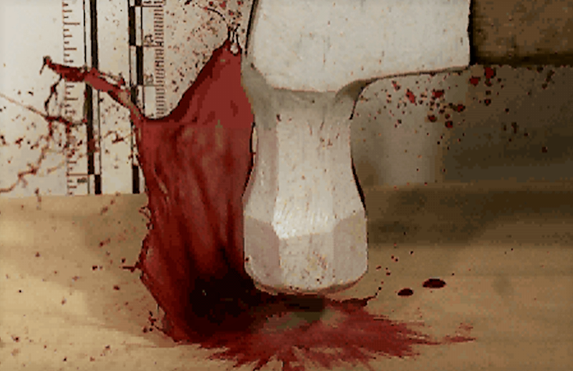NEWLY DEVELOPED TRAINING OPPORTUNITY!
Detection and Enhancement of Blood Evidence

OUTLINE
Crime scenes involving bloodshed are often times complex environments with vast opportunities to locate and preserve valuable evidence. This three-day course is designed to provide crime scene investigators or laboratory personnel with the tools necessary to detect, enhance, and document blood evidence. systematically and methodically to collect the most valuable blood evidence. Some crime scenes will present apparent blood evidence, while other crime scenes may be more complex and require search or enhancement techniques. Various chemical presumptive and enhancement techniques, along with proper documentation and preservation methods must be employed at crime scenes involving bloodshed to ensure thorough investigations are performed.
This course will focus on processing bloody crime scenes, from A to Z. Course instruction will cover bloodstain pattern recognition, detection, documentation, and preservation methods. Bloodstain search techniques will be employed to locate latent bloodstains within crime scenes and on items of potential evidentiary significance. Students will be introduced to various presumptive blood testing techniques as well as specialized chemical processing utilized to locate minute or cleaned up bloodstains. Friction ridge and footwear impressions deposited in blood are additional forms of evidence frequently located within bloody crime scenes. Multiple blood enhancement techniques will be employed to establish methods to develop impressions deposited in blood and capture comparison quality photographs to allow for future examinations.

PRACTICAL EXERCISES
Practical exercises will be utilized throughout the course to enhance the learning experience. All practical activities throughout the training are designed to provide participants with a foundation to better approach bloody crime scenes and support sound decision making throughout the crime scene processing phase. Students will utilize photography techniques, bloodstain descriptors, notes and sketching, as well as chemical processes to better document and describe their crime scene investigation techniques. By providing students with the opportunity to create bloodstain impressions and bloodstain patterns, each participant will learn how to recognize, describe, enhance, and collect valuable blood evidence. At the culmination of this training, students will be well equipped to approach bloody crime scenes with knowledge and essential tools.
Chemicals used in this course include, but are not limited to the following:
- Leucocrystal Violet (LCV)
- Coomassie Blue
- Amido Black
- Bluestar® Forensic
- Phenolphthalein
- Hungarian Red
- Ninhydrin
- Acid Yellow 7
Contact Ridgeline Forensics to learn more about this training and/or find out how to host the training in your area!


